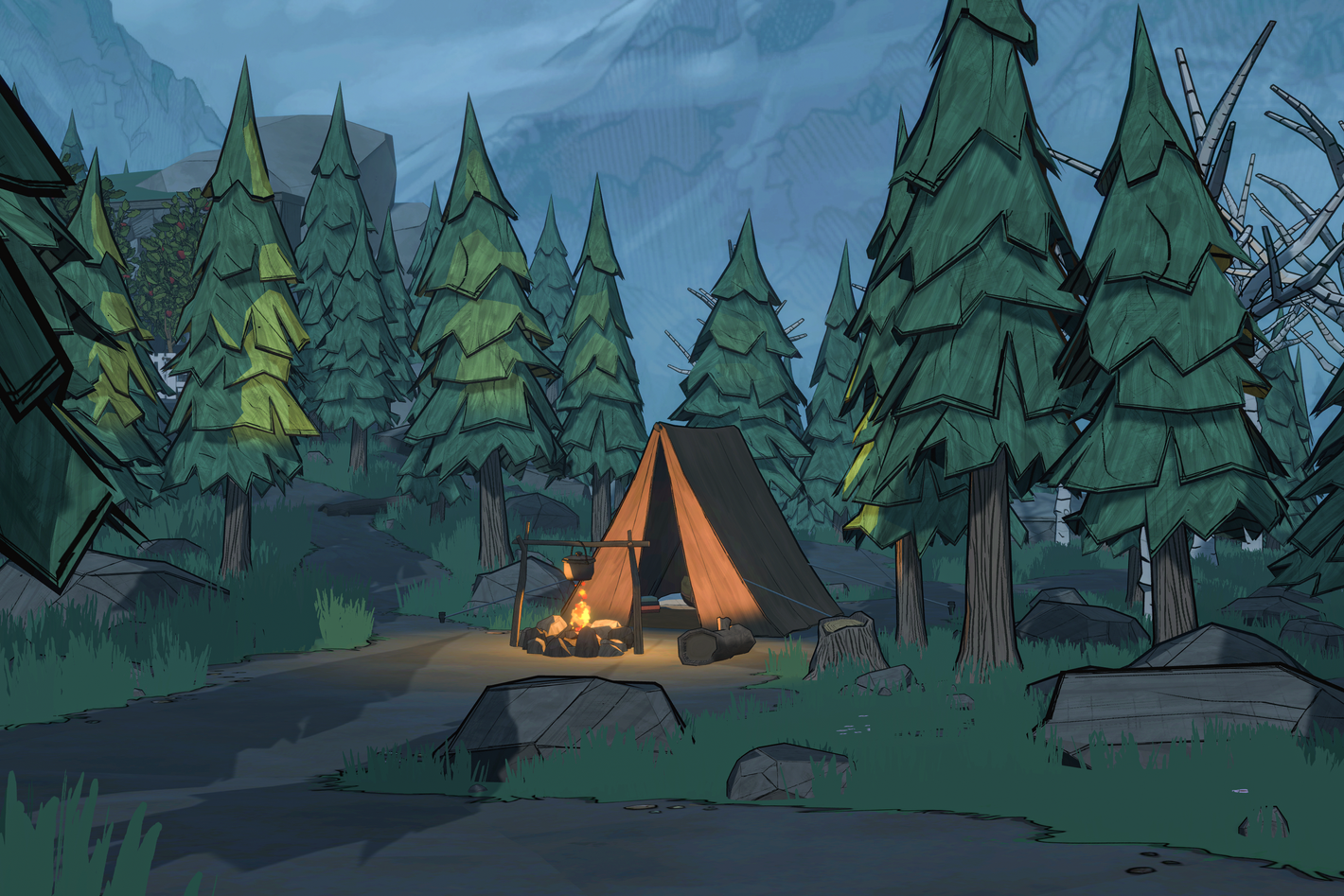

Walking around a big, empty house by yourself can be unnerving — open hallways, quiet rooms, the hum of electricity. Sometimes it feels like there’s someone right behind you. Luckily, there are no such ghosts or eerie surprises in Blue Prince, the debut game from publisher Dogubomb and director Tonda Ros. The game is plaintive and calming, allowing you to move at whatever pace you like through a house so meticulously curated as to be a museum. Blue Prince rewards curiosity and trial and error, with no combat or even jumping. For all intents and purposes, it ought to chill me out, so why do I hold my breath every time I boot it up?
In Blue Prince, you play as Simon P. Jones, a young man who has been willed the ever-expanding Mt. Holly Estate by his grandfather, Herbert S. Sinclair. But there’s a catch: To secure his inheritance, Simon must locate the manor’s hidden 46th room. In order to locate — and subsequently reach — that room, you as Simon need to build the interior of Mt. Holly every day. Using a nine-by-five map grid, you place rooms within the house’s blueprints (blueprints … Blue Prince … get it?), creating a mazelike layout that ought to lead you all the way to the north of the home, where presumably the hidden room lies.
Blue Prince is kind of like an elevated game of Chutes and Ladders, where some rooms allow you to progress by giving out goodies and others take away steps or money. While there are a number of bog-standard rooms in the Mt. Holly Estate — bedrooms, kitchen, dining room, den, and so on — there are also a number of special rooms, like the observatory, the aquarium, the rumpus room, and others this blogger has yet to encounter. Just about every room has something to look at, read, or uncover through in-game puzzles. It’s also a roguelike, which means when you run out of your allocated steps for the day, night falls and the house resets. You have to build everything anew, and all that you’ve collected, from little items like currency and keys to big ones like a shovel, goes with it.
In terms of gameplay, Blue Prince is cool and calm, the house rendered in a textured storybook animation. There’s no time limit to how you spend your day, just steps, so you can take as little or as long as you like in each room. Whereas a number of roguelike games — like Hades or Balatro, for example — inspire a kind of frantic, addictive gameplay, Blue Prince’s leisurely pace allows each run to feel rewarding as opposed to compulsory. A run can take anywhere from a few minutes to half an hour depending on how involved you want your room exploration to be. There is a lot to keep track of, so much so that the game encourages you to take notes (or, as a few of my intrepid co-workers suggested, take a photo of your screen on your phone). While the mansion’s layouts change day to day, most of the information inside them stays the same: Any letters you read or passwords you get will remain static through the game. The more you read, the more of the Sinclair family’s tragic story grows apparent. Though the Mt. Holly Estate is not literally haunted, this is not exactly a house full of pleasant memories. Still, playing from a tiny Brooklyn one-bedroom means I walk through Mt. Holly amazed at the concept of a boudoir or a library or a dovecote — things out of the realm of possibility for most homeowning hopefuls of my generation.
Despite the game’s ghostlessness, I still get a little antsy to boot up the game once the sun goes down. There is an overwhelmingly ominous feeling to it — maybe rooted in the claustrophobic first-person POV or the ambient score by composers Trigg & Gusset. The rootlessness of the game’s melodies make the possibilities feel endless — and to some degree, they are — but I have to admit the creepiness can sometimes overwhelm. The music drifts in and out, portending something that may not be there. As someone with little tolerance for things that are scary, let alone video games that are scary, I’m also here to answer the most Googled question about Blue Prince: Is it scary?
Well, mostly no. Blue Prince lacks jump scares or creepy noises or a spooky presence tracing your steps, but a handful of cutscenes that occur in some rooms conjure a sense of dread. There are a few rooms with terrible vibes — the darkroom, the security room, even the aforementioned rumpus room — but not because of anything actually disturbing so much as a bit odd or off.
The only legitimate dread the game summons occurs in the billiard room, where a math-based puzzle on the dartboard allows a player to collect some goodies. With colors representing various math functions, you have to solve a series of problems in a row in order to open up the dartboard. These start simple enough — addition, subtraction — before escalating to multiplication, division, squares, and roots. What’s next, the Pythagorean theorem?
Reaching the billiard room is a little bit like studying for the GRE, but having sunk tens of hours into the game, I now feel like I’m better at math than I ever was, even better than when I nearly failed AP Calculus. For a long time, I regarded math with the same apprehension I do horror movies. I want whatever’s hiding in the billiard room, however, so I’ve had to face my fears over and over in order to get good at the game. Now, I approach the billiard room with an unfettered sense of bravery: I know my times tables, and I am getting faster and faster at doing mental math. At this point in my gameplay, choosing the billiard room is an opportunity to feel smart more than anything else. Soon, Blue Prince won’t be enough for my numerical skills — I might have to start calculating tips in my head next.

Latest News
For Sale! 2016 Sea Ray 350 Sundancer – $180,000
Reel Deal Yacht is pleased to feature a meticulously maintained 2016 Sea...
J.J. McCarthy is ready for the job and the pressure of taking over as QB for the Vikings
While everyone else in the NFL ‘s record crop of first-round quarterbacks...
Aaron Ekblad suspended 2 games for elbow during Game 4
The Florida Panthers will be without a key defender as they look...
Spurs’ Castle wins rookie of the year, joining Wembanyama as back-to-back San Antonio winners
Stephon Castle made no secret about it: He wanted to be rookie...
Haliburton and Pacers eliminate Bucks from playoffs, closing OT with 8-0 run to win 119-118
Tyrese Haliburton thought he let the Indiana Pacers down in the fourth...














Leave a comment